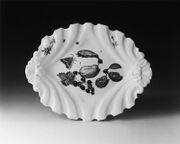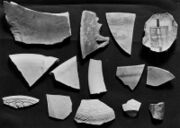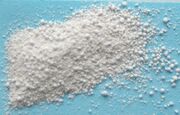Tin white
Description
An opaque, bluish-white, pearlescent pigment composed of Stannic oxide. Tin white occurs naturally as the mineral Cassiterite. Most commonly, tin white was used for opacity in ceramic glazes and glassware to produce a translucent milky color. Because it remains suspended in the vitreous matrix of the glazes, and because its high refractive index is sufficiently different from the matrix, the tin oxide particle scatter light very effectively thereby increasing the opacity of the glaze. Tin oxide was also used as a white pigment in watercolor paintings and manuscript illuminations until the early 17th century. About this time, it was discontinued because the pigment could blacken in sunlight and when mixed with Lead white.
Synonyms and Related Terms
CI Pigment White 15; stannic oxide; tin oxide; tin(IV) oxide; tin dioxide; white tin oxide; flowers of tin ; tono (Esp.); blanc d'étain (Fr.); branco de estanho (Port.)
Risks
- May be a respiratory irritant
Physical and Chemical Properties
- Composition = SnO2 (mol. wt. 150.708)
- Density = 6.95 gm/cm3
- Melting pt. = 1630 C
- Boiling pt. = 1800-1900 C
- Refractive index = 2.006
- Lightfast; discolored by oxidizers
- Soluble in concentrated sulfuric acid, hydrochloric acid. Insoluble in water.
- Crystal = rutile tetragonal
Resources and Citations
- The Color of Art Pigment Database: Pigment White 15
- ChemicalBook: Stannic oxide
- Ralph Mayer, A Dictionary of Art Terms and Techniques, Harper and Row Publishers, New York, 1969 (also 1945 printing)
- R.D. Harley, Artists' Pigments c. 1600-1835, Butterworth Scientific, London, 1982
- Random House, Webster's Encyclopedic Unabridged Dictionary of the English Language, Grammercy Book, New York, 1997
- Art and Architecture Thesaurus Online, https://www.getty.edu/research/tools/vocabulary/aat/, J. Paul Getty Trust, Los Angeles, 2000
- Wikipedia: Tin(IV) oxide Accessed March 2025


